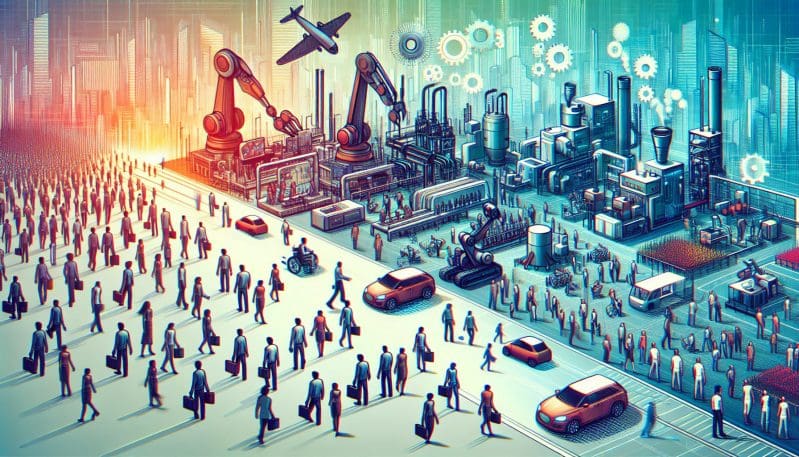The Future of Work: Navigating the Chasm between Automation and Employment
- Home
- The Future of Work: Navigating the Chasm between Automation and Employment
- Editors Desk
- January 11, 2024
- 0 Comments
In an age where the drumbeat of technological progress grows louder by the day, the workforce stands at a critical juncture. The rapid advancement of artificial intelligence and automation technologies heralds a new era of innovation and efficiency. However, it also raises a pressing question: as machines become more capable of performing tasks that were once the sole province of humans, what becomes of the worker?
No Worker Left Behind understands that the future of work must be approached with both optimism and caution. We believe in harnessing the power of automation to propel our economies forward while simultaneously ensuring that workers are prepared for the changes that lie ahead. To achieve this balance, we advocate for a multi-pronged approach that includes comprehensive policies, educational reforms, and targeted workforce training programs.
Firstly, policy-making must be visionary and agile. Governments should collaborate with industry leaders to establish regulations that encourage innovation while also instituting safety nets for those at risk of job displacement. This could involve universal basic income programs, tax incentives for companies that invest in human capital, or even ‘automation taxes’ to fund workforce retraining programs.
When it comes to education, we must reinvent our curricula to keep pace with the demands of tomorrow’s job market. This starts with integrating more STEM (Science, Technology, Engineering, and Mathematics) education in early learning and continues through higher education with a focus on lifelong learning and adaptability. Furthermore, vocational training should be revamped to provide skills that are complementary to technology rather than in competition with it.
Workforce training programs are the cornerstone of our approach. No Worker Left Behind advocates for public-private partnerships that create pathways for workers to transition into new roles. These programs should offer opportunities for reskilling and upskilling, tailored to the needs of local job markets. They must be accessible and inclusive, ensuring that underrepresented groups have equal opportunities to succeed in the new digital economy.
The strategies we implement must be sensitive to the diverse economic, cultural, and social landscapes across the globe. In developed nations, where the adoption of automation is more prevalent, a focus on reskilling for high-tech jobs may be pertinent. In contrast, emerging economies might prioritize the integration of automation in ways that augment the productivity of their workforce without causing drastic unemployment.
Ultimately, No Worker Left Behind envisions a world where progress does not come at the expense of employment. By taking an active role in shaping the future of work, we can close the gap between the promise of automation and the protection of our global workforce. It requires concerted effort, collaboration, and a consistent push towards innovation in policy and education that ensures everyone has a place in the work environment of tomorrow.
In conclusion, the chasm between automation and employment need not be a dividing line but a space for opportunity and growth. As we stand on the brink of this technological revolution, No Worker Left Behind is committed to ensuring that the benefits of automation are not the privilege of a few but the shared legacy of all workers worldwide.


Leave A Comment